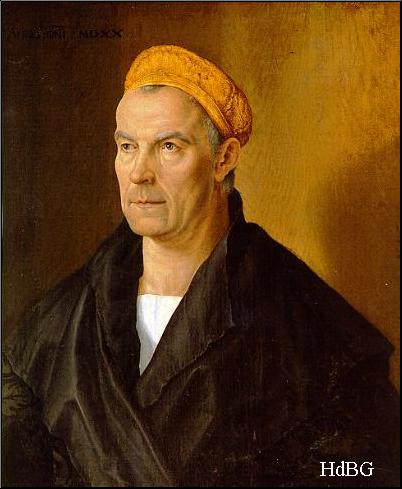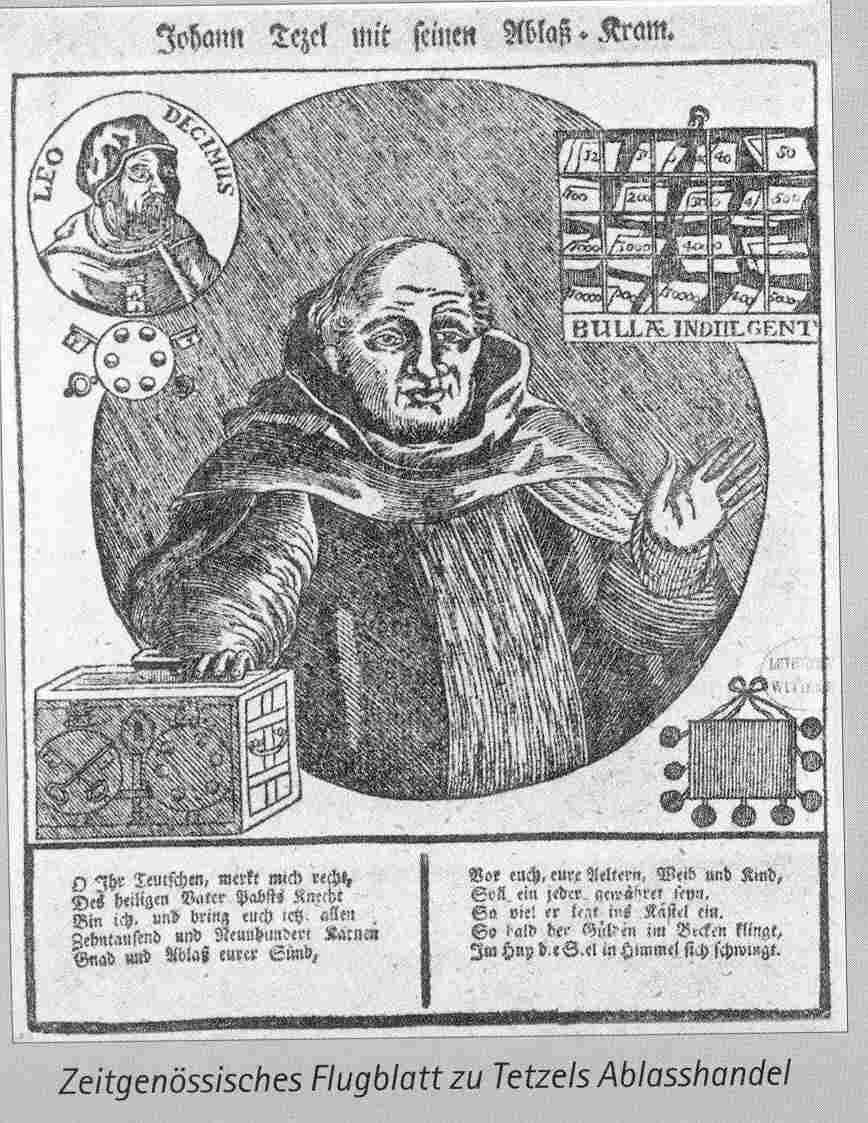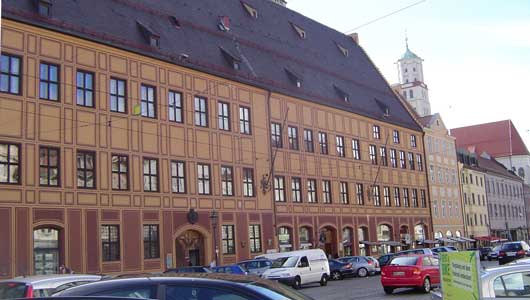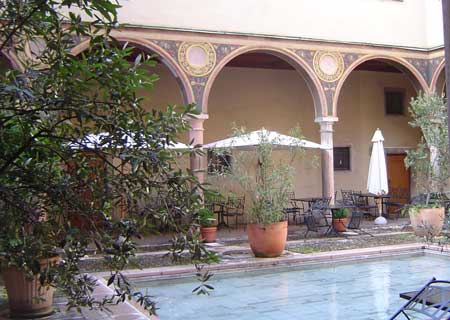
Jakob Fugger and the Reformation

Jakob Fugger played important roles in the unfolding of the protestant reformation. In this web page, I will discuss several key events.
Click here for a short description of the Fugger family history.The first question is why is a very wealthy banker involved in religion at all? It turns out that in the year 1500 the city of Rome and its Holy Places were in disrepair. This effected many things including the Papacy that was highly dependent of Pilgrims expenditures and donations for support. That is, in modern terms, Rome was highly dependent on religious tourism.
Pope Leo X (born Giovanni de' Medici, the second son of Lorenzo the Magnificent, ruler of the Florentine republic) decided to renovate the old religious sites. This included building the modern St Peter's Cathedral, the Sistine Chapel and related buildings as well as the plaza in front of the Cathedral. To do this took skilled artists like Michelangelo and lots of money. And what better place for Leo to get money than from Jakob Fugger. So it turned out that Jakob Fugger financed the building of what we know of as Vatican City, this was the beginning of a major financial crisis for the Catholic Church.
Of course, the Pope needed to repay the loans to Fugger. So Leo X did many things to gather the necessary funds. Leo squeezed all believers for funds, including the German people who were unhappy to fund things they might never see (taxation is never popular). And Leo sold high church offices to Princes who could pay the necessary money (between 1495 and 1520 88 of 110 bishoprics in Germany, Hungary, Poland and Scandinavia were appointed by Rome on the basis of Fugger money transfers). And Leo allowed the sale of indulgences not only for past sins as had been customary in the past but for future sins (so you could guarantee in advance that your planned affair would not lead to a painful afterlife). Dominican Friar Tetzel was the best known of the indulgence sellers. The Friar's most famous jingle was "As soon as the coin in the coffer rings, a soul from Purgatory upward springs."

Around 1520 there were many people both inside and outside the church concerned about financial and moral corruption of the church and her clergy.
Bishop Rem of Augsburg and Cardinal Lang of Salzburg were two such concerned insider reformers. Martin Luther was an insider too (he was an Augustinian monk) and was concerned about all of the above too but especially about indulgences for future sins.In October 1518 Luther was called to Augsburg by the Pope to meet with Papal Legate Cardinal Cajetan; the interview followed the meeting of the Diet of Augsburg. The meeting was at the newly completed Fugger residence in Augsburg.

With an occasional rest, perhaps, in his garden:

Cardinal Cajetan told Luther to recant his many statements at odds with the Papacy's positions. It was a Jakob Fugger's house where Luther refused to recant.
Click here for more on this story.All this involved the Rem(us) / Fugger family in addition to the reformer Bishop Remus mentioned above.
Wilhelm Rem, the well-known Augsburg chronicler, was a contemporary of Jakob and married Jakob's sister Wallburga Fugger. While Jakob sided with the Pope Leo X, Wilhelm did not side with Pope Leo X (I wonder what Wallburga though of all this). Georg Remus, the great grandson of Wilhelm Rem and Wallburga Fugger, became Vice Chancellor of the newly established Protestant Altdorf University and helped to codify the law in protestant Germany. Click here for more on this story.
Please send any queries to Bill Remus at
September 17, 2007